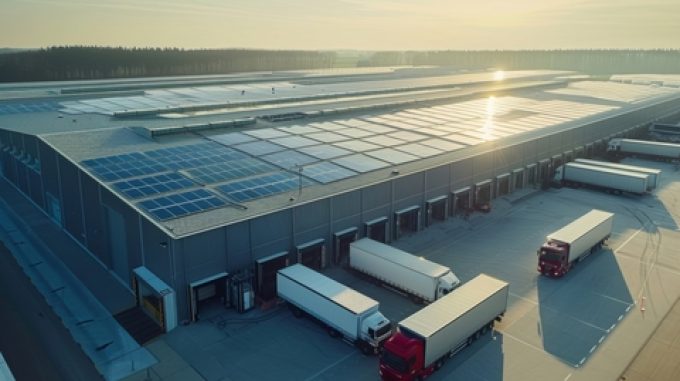Amazon decides it's time 'to shout' about its air cargo offering
Amazon Air Cargo has decided it’s time to make its presence felt in the industry ...
BA: WIND OF CHANGEMAERSK: BULLISH CALLXPO: HEDGE FUNDS ENGINEF: CHOPPING BOARDWTC: NEW RECORDZIM: BALANCE SHEET IN CHECKZIM: SURGING TGT: INVENTORY WATCHTGT: BIG EARNINGS MISSWMT: GENERAL MERCHANDISEWMT: AUTOMATIONWMT: MARGINS AND INVENTORYWMT: ECOMM LOSSESWMT: ECOMM BOOMWMT: RESILIENCEWMT: INVENTORY WATCH
BA: WIND OF CHANGEMAERSK: BULLISH CALLXPO: HEDGE FUNDS ENGINEF: CHOPPING BOARDWTC: NEW RECORDZIM: BALANCE SHEET IN CHECKZIM: SURGING TGT: INVENTORY WATCHTGT: BIG EARNINGS MISSWMT: GENERAL MERCHANDISEWMT: AUTOMATIONWMT: MARGINS AND INVENTORYWMT: ECOMM LOSSESWMT: ECOMM BOOMWMT: RESILIENCEWMT: INVENTORY WATCH

After some easing earlier in the year, warehousing constraints and pricing in the US appear to be headed up again. Some online merchants are having a strange ride into the peak season.
E-commerce sellers using Amazon for distribution are bewildered. A number of blogs indicate that their authors had been led to expect higher storage limits at the giant’s warehouses, only to find those limits cut as they were preparing for the peak selling season.
Bloggers stated that Amazon told them in July that their storage limits were expected to double, and encouraged them to send inventory to warehouses in August or September, in preparation for the peak season, only to find their storage limits had actually been cut by 25%.
“Now I don’t have room to send in all my holiday inventory,” one seller posted.
It is unclear why Amazon was predicting in the summer that sellers’ storage minimums would double, or why this was subsequently reduced. Capacity limits for use of the Fulfilment by Amazon (FBA) service are usually determined by how they score on the company’s Inventory performance Index, sales forecasts and fulfilment centre capacity.
This is not the first time FBA users have faced unexpected reductions of space. In October 2022, they complained about unexpected reductions in their space in Amazon fulfilment centres. Three months later, the e-commerce giant revamped its system, combining restocking and storage limits into a single monthly ‘FBA capacity limit’, which was flanked by a mechanism that allowed users to bid for additional space in an auction system.
According to Amazon, this should result in more storage space for most FBA users.
Finding warehouse space has been a challenge since the pandemic, but the situation eased earlier this year, as inventory levels finally descended, noted Bob Imbriani, SVP international of forwarder Team Worldwide.
The respite proved short-lived, though.
“We started, a few weeks ago, to notice some pressure on import/export warehousing building up,” Mr Imbriani reported.
One reason for this has been the early peak season in container shipping this year, as cargo owners brought in cargo early to avoid new tariffs (which were postponed) and potential disruption from the labour contract negotiations on the US east coast.
The work stoppage added to the build-up of inventory as export cargo was stuck. In addition, the slowing US economy produced a pile-up of unsold goods, such as new iPhones, which failed to meet anticipated sales volumes, Mr Imbriani noted.
The dynamics on the supply side have also shifted. Warehouse construction starts have slowed significantly this year. In part, this is a reaction by developers to the descent from peak demand, in part the result of high interest rates and elevated costs.
At the same time, opposition to warehouse construction has built up in communities. This culminated in a bill on warehouse development in California that aims to prevent city and county administrations from approving warehouse construction or expansion projects unless they meet certain standards.
The bill restricts warehouse construction to thoroughfares and roads of primarily commercial use, and mandates such buildings to be several hundred feet away from homes, schools and healthcare facilities. In addition, developers will be obliged to build affordable housing, if any residential buildings are taken down for warehouse construction, and to provide displaced tenants with 12 months’ rent.
However, Amazon’s appetite for new warehouses appears to be undiminished. In July, the company opened its largest storage facility in the US, a six-story building in California: 4.5 million sq ft, housing more than 7,000 robots.
Next year Amazon is set to open its ninth warehouse on Long Island, and a facility covering 3.1 million sq ft is scheduled for Buffalo in 2026.
The race for mega-facilities is not slowing down. Retail giant Target recently opened a sort centre in Detroit that can handle up to 60,000 packages a day. This is part of a push to ramp up delivery speed while lowering cost. Target has earmarked $100m to boost its sort centre footprint to more than 15 facilities by 2027.
Comment on this article